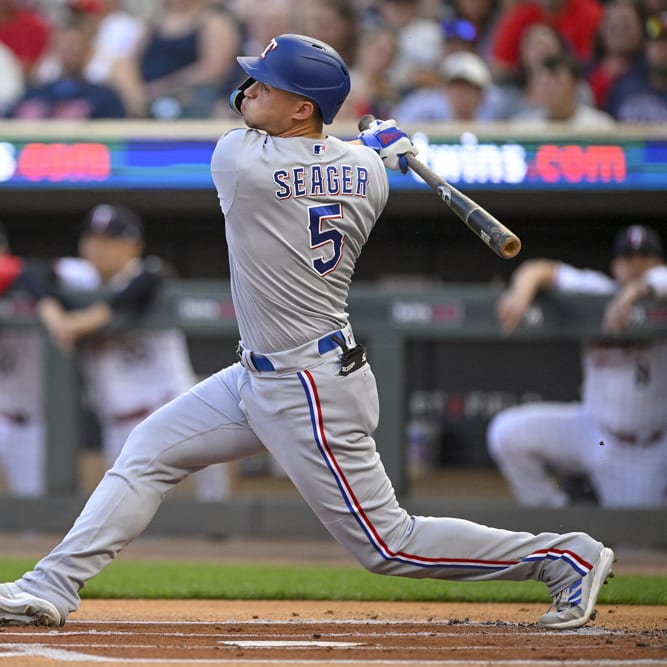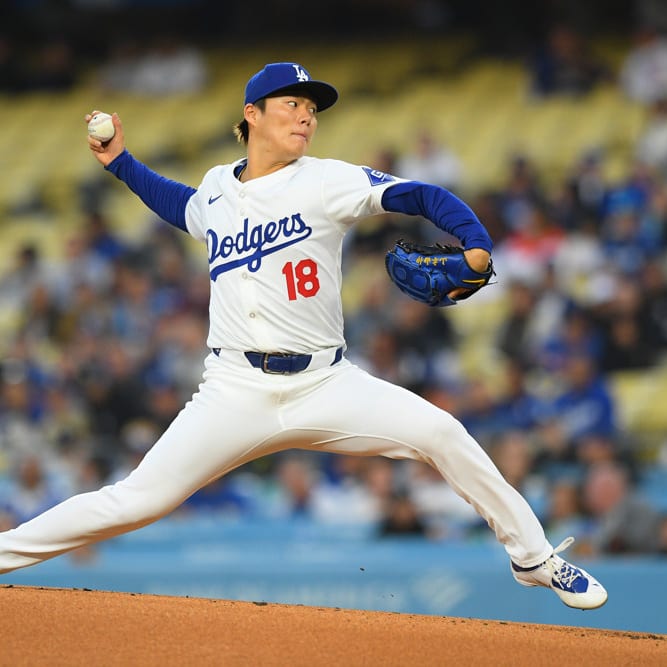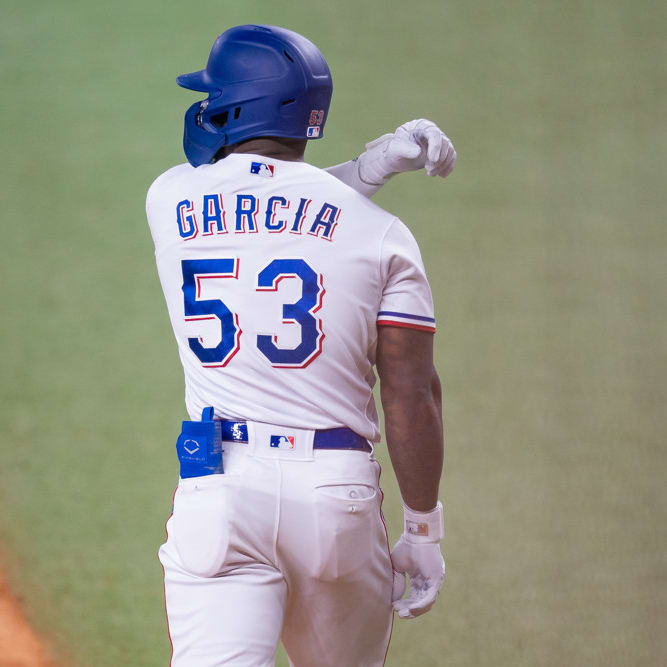This article is part of our House of Shlain series.
First things first, if you haven't read our very own Jason Collette's article titled "The Great Divide" please do so now. I'll wait. Good? Jason's a pretty smart guy, eh? I mean, he likes the Rays, but nobody is perfect.
Anyway, if you haven't been living under a rock then you've definitely heard Chris Liss talk on SiriusXM about the virtues of using a 50/50 split in auction dollars when it comes to pitchers and hitters. To be clear, Liss is suggesting a 50/50 split with the top end starters only. He's not (I repeat not) advocating spending $18 dollars on Rick Porcello; he's not that crazy.
However, I do find myself on the other side of his argument. Looking at last season's Tout Wars mixed league auction values from Collette's article, Max Scherzer was the only pitcher to go for at least $15 and return a profit greater than $2 (Scherzer returned a $7 profit). Clayton Kershaw, Adam Wainwright (coming off an injury), and Madison Bumgarner returned $1 in profit and Chris Sale returned $2. That leaves 18 other pitchers that went for at least $15 and failed to break even, 10 of which were double-digit losers. That doesn't exactly inspire me to go out and outbid everyone for multiple "aces" anytime soon.
Now, I'm not saying it's foolish to aggressively pursue the top pitchers just because the top guys weren't value plays last season. I did a mixed league mock draft back in February and took
First things first, if you haven't read our very own Jason Collette's article titled "The Great Divide" please do so now. I'll wait. Good? Jason's a pretty smart guy, eh? I mean, he likes the Rays, but nobody is perfect.
Anyway, if you haven't been living under a rock then you've definitely heard Chris Liss talk on SiriusXM about the virtues of using a 50/50 split in auction dollars when it comes to pitchers and hitters. To be clear, Liss is suggesting a 50/50 split with the top end starters only. He's not (I repeat not) advocating spending $18 dollars on Rick Porcello; he's not that crazy.
However, I do find myself on the other side of his argument. Looking at last season's Tout Wars mixed league auction values from Collette's article, Max Scherzer was the only pitcher to go for at least $15 and return a profit greater than $2 (Scherzer returned a $7 profit). Clayton Kershaw, Adam Wainwright (coming off an injury), and Madison Bumgarner returned $1 in profit and Chris Sale returned $2. That leaves 18 other pitchers that went for at least $15 and failed to break even, 10 of which were double-digit losers. That doesn't exactly inspire me to go out and outbid everyone for multiple "aces" anytime soon.
Now, I'm not saying it's foolish to aggressively pursue the top pitchers just because the top guys weren't value plays last season. I did a mixed league mock draft back in February and took Jose Fernandez and Chris Sale in the third and fourth rounds. It was a 15-team mixed league, which is a little deeper than most, and I felt it was important to make sure I had two top pitchers. Many owners in a mixed league are likely to get at least one ace pitcher depending on the size of the league and depending on the number of pitchers that you consider to be true aces, the pool is just that much deeper. As I said in my write up of the mock at the time, in mixed leagues there is a great deal of importance placed on how good your second best pitcher is.
In an "only" league, the dynamic is very different. In AL-only this year, there are really only six pitchers that Liss will be using his strategy on (I assume): Yu Darvish, Max Scherzer, Justin Verlander, Felix Hernandez, Chris Sale, and David Price. Price's velocity seems to have returned this spring, but even he's iffy despite the fact that he won the Cy Young in 2012. The scarcity of top pitchers is real, but the reliability of pitchers is always in question. You don't want to pay for Verlander if he has another 4.49 ERA from May through August and only wins 13 games. Sale's mechanics are the stuff of nightmares, Scherzer threw 200 innings and an ERA below 3.50 for the first time last year (he's 29), Felix had a 5.77 ERA over his last eight starts in 2013, and Darvish walked 9.5% of batters faced last year. These are the best pitchers in the league and I'm picking nits, but the point that even the top pitchers aren't without risk stands.
The fact that pitchers are inherently riskier than batters in a given year is a big part of the reasoning for the standard 65-70/35-30 split. There's also the fact that there are more strikeouts in the game than ever before (the strikeout rate has increased every year since 1993) and that pitchers can only contribute in four categories at best, which is why I cringe every time I hear Liss say that 50 percent of stats come from pitchers. I've yet to see a pitcher contribute both wins and saves.
I found this exchange between Liss and Mike Gianella, of Baseball Prospectus and Roto Think Tank, particularly insightful regarding both sides of this argument. Mike is a good source as he's probably more obsessed with auction values than anyone I know or will meet in the future.
Tweeting this again for article purposes pic.twitter.com/jI4SY8xwqj
— Nick Shlain (@electricsnuff) March 20, 2014On one side, Liss argues that's it's best to zig when everyone else is zagging. On the other, Gianella maintains that you have to play the market, or in this case the room. I'm inclined to agree with Mike in that you don't have to change your split much at all to get the top pitchers you covet. You just have to outbid the room, which, unless you're sitting across from Liss, likely won't include someone with a 50/50 split for the top pitchers in mind.
I did an NL-only mock auction for Baseball Prospectus last month and I bought Kershaw for $40, Steve Cishek for $20 (last good closer available), and Gio Gonzalez for $18. I didn't have another pitcher in double digits and my team was still projected to win the league by eight or nine points based on the CBS and RotoWire draft software projections. I don't say that to just pat myself on the back, but to show that you don't need to spend $100 on pitching in any league to have a winning team. I was sort of close to spending $100 on pitching, but that number is inflated by the Cishek price. If I got a different closer for something in the low teens, I'd have basically been right on a 67/33 split, which is what I typically aim for.
In an "only" league, you don't need two top pitchers. There are enough strikeouts and good ratios out there that one will do just fine and still allow you to spend heavily on offense. Buying multiple top pitchers is not only risky, but also makes it tougher to buy a good offense with less money than your competitors. It's also possible you end up trading an ace out of necessity for offense, or because you find you didn't really need the extra ace.










